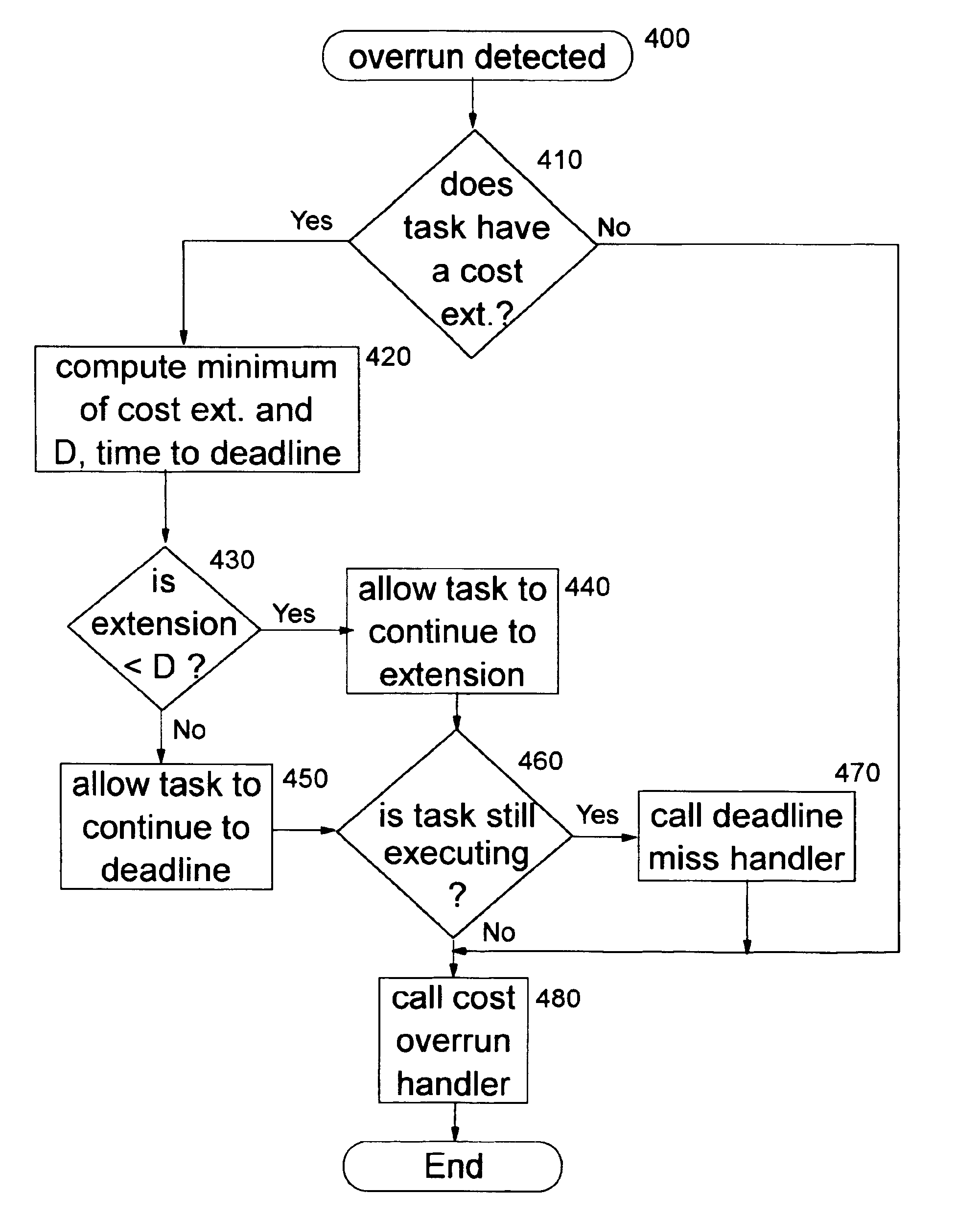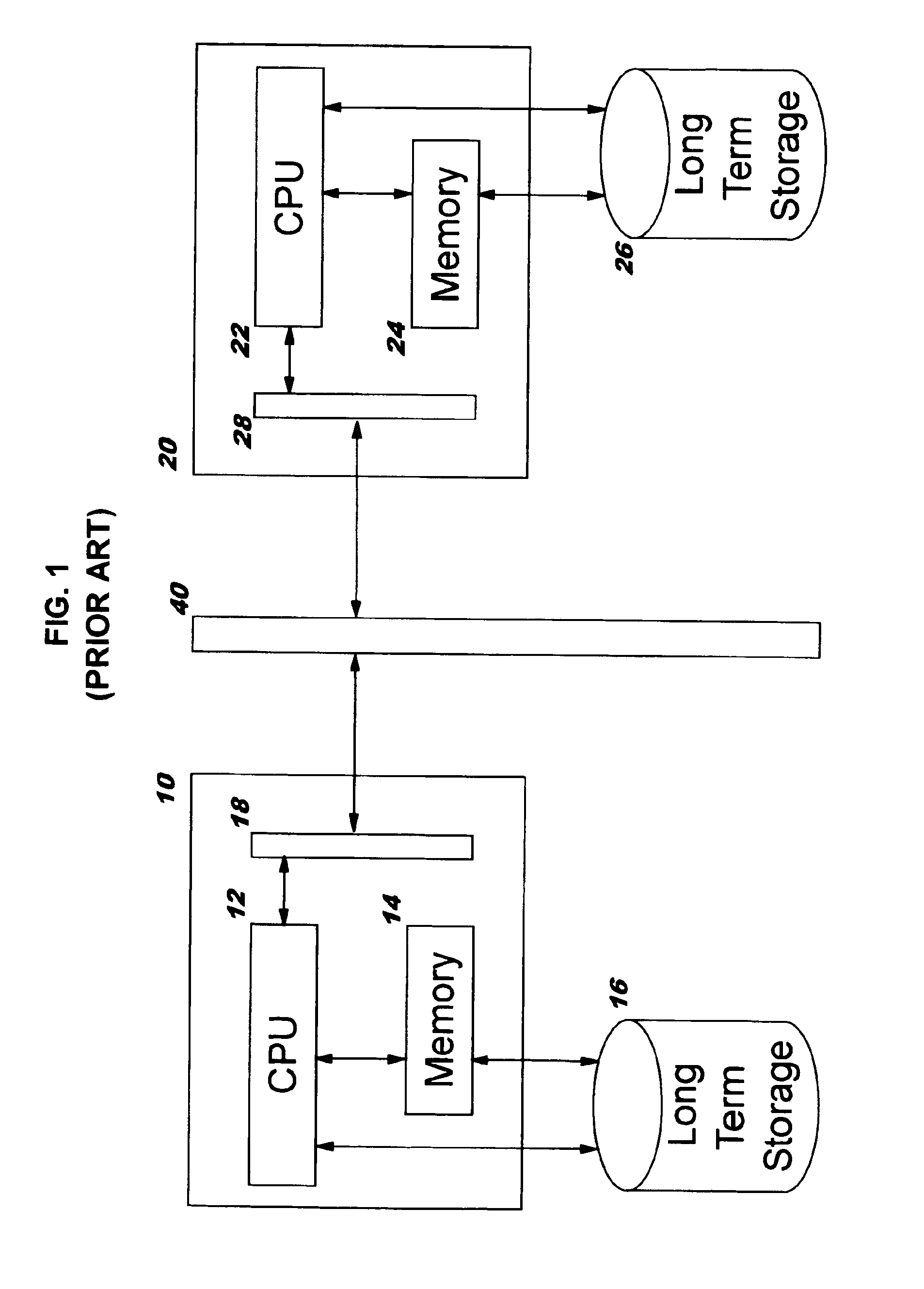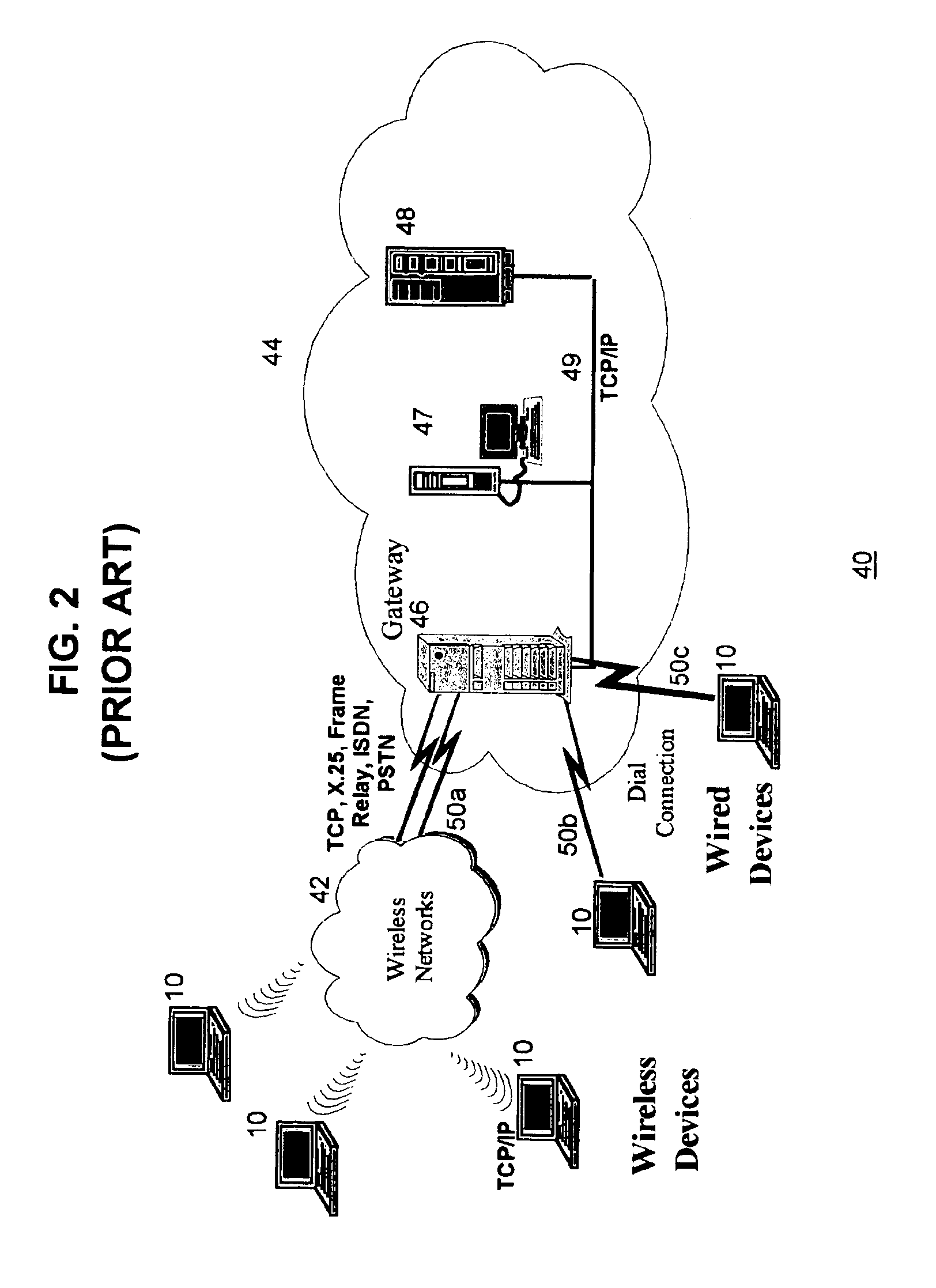System for incrementally computing the maximum cost extension allowable for subsequent execution of each task using fixed percentage of the associated cost
- Summary
- Abstract
- Description
- Claims
- Application Information
AI Technical Summary
Benefits of technology
Problems solved by technology
Method used
Image
Examples
Embodiment Construction
[0025]FIG. 1 illustrates representative computing devices in which the present invention may be practiced. Computing device 10 is preferably a standard computing device of the type that is commercially available, and comprises a central processing unit (CPU) 12, memory 14 (which may be primary and / or secondary memory), long-term storage 16 (which can include one or more of a hard drive, diskette drive, tape drive, etc.), and (optionally) network transmission capability 18. Computer program instructions that implement the present invention are preferably stored in the memory 14 (and / or in storage 16).
[0026]Computing device 10 may be a server or mainframe, a single-user workstation, or any other type of computing device. In typical uses of the present invention, a system of real-time tasks is executing on device 10.
[0027]In some systems with which the present invention is used, an application executing on a first computing device 10 will exchange information with an application execut...
PUM
 Login to View More
Login to View More Abstract
Description
Claims
Application Information
 Login to View More
Login to View More - R&D
- Intellectual Property
- Life Sciences
- Materials
- Tech Scout
- Unparalleled Data Quality
- Higher Quality Content
- 60% Fewer Hallucinations
Browse by: Latest US Patents, China's latest patents, Technical Efficacy Thesaurus, Application Domain, Technology Topic, Popular Technical Reports.
© 2025 PatSnap. All rights reserved.Legal|Privacy policy|Modern Slavery Act Transparency Statement|Sitemap|About US| Contact US: help@patsnap.com



